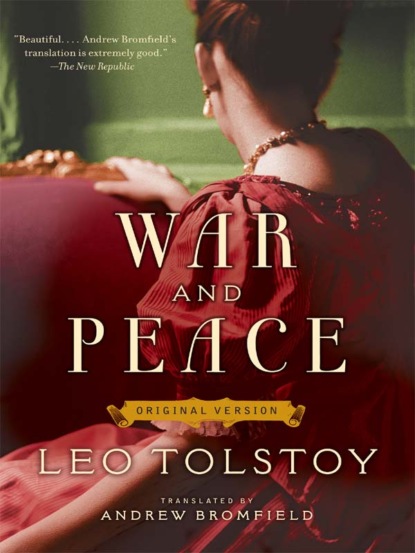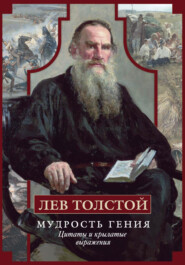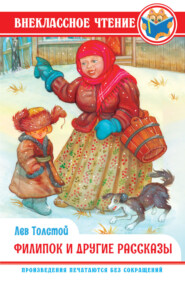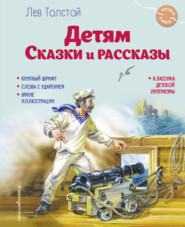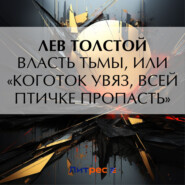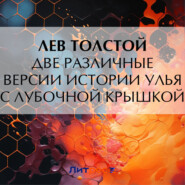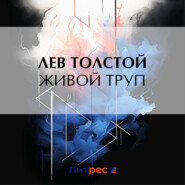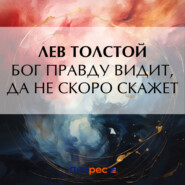По всем вопросам обращайтесь на: info@litportal.ru
(©) 2003-2024.
✖
War and Peace: Original Version
Автор
Год написания книги
2019
Настройки чтения
Размер шрифта
Высота строк
Поля
Copyright
About the Publisher
LEO TOLSTOY Photograph, Moscow, 1868 (#ulink_60b02ed4-1e4e-5de7-9fbc-813e9344b806)
INTRODUCTION
Ben Jonson is said to have criticized Shakespeare when told that ‘hee never blotted out line’, and Sir Walter Scott was similarly an author who wrote with extraordinary rapidity and accuracy. Leo Tolstoy, in contrast, regularly rewrote and restructured much of his work, on occasion spending years immersed in elaborate correction. It is not surprising, therefore, that War and Peace, the longest major Russian novel ever written, occupied the greater part of the decade 1863 to 1873. He had been mulling over the potential of an historical novel some years before that, but his earliest drafts for the book dating from 1863 show that it was then that he decided to write a work whose setting would be the dramatic events associated with Russia’s wars against Napoleon. Two years later he published the first section in the literary journal Russkii Vestnik under the title 1805, and the second entitled War appeared a year later in 1866.
Although Tolstoy’s prime concern lay with exploration of human character, he was fascinated by the grand drama of historical events. He had experienced war in the Balkans, the Caucasus, and the Crimea, and from a cheerfully unreflecting Russian patriot he became increasingly concerned to discover the underlying rationale of a phenomenon which perversely legitimated lying, spying, murder, cruelty, and rapine on a grand scale – vices which civil society is at pains to suppress. Conventional historians of the day recounted events in terms of grand strategy carried out by commanders executing complex manoeuvres, which proved successful or unsuccessful according to their talents and those of their adversaries. Tolstoy – who had known at first hand the smoke, din, fire, terror, and heady intoxication of battle – saw in contrast only the interplay of confusion, chance, and a multitude of disparate factors far beyond the capacity of individuals to control or even understand.
All this is well known: what is less so is the extent to which Tolstoy pursued painstaking researches as an historical novelist. His best biographer, the Englishman Aylmer Maude, suggested that War and Peace was not an historical novel in the true sense, since the age in which his story is set remained within the memory of his parents’ generation. But this is to do Tolstoy an injustice. His notes and correspondence illustrate the remarkable extent to which he sought to reconstruct the past, whether pacing the battlefield at Borodino or investigating recondite details ranging from the extent to which men still wore hair powder in 1805 to the fact that the copse in which Pierre Bezukhov and Dolokhov fought their duel was pine rather than birch.
One of Tolstoy’s major problems was that of establishing the precise nature of his genre. As he explained to Katkov, the editor of Russkii Vestnik, in January 1865: ‘the work is not a novel and is not a story, and cannot have the sort of plot whose interest ends with the dénouement.
I am writing this in order to ask you not to call my work a novel in the table of contents, or perhaps in the advertisement either. This is very important to me, and I particularly request it of you’.
Those sections which appeared in 1865 and 1866 were but the introduction to a much larger work, which by the end of 1866 he believed he had completed. Over the previous six months he had written 726 pages of manuscript, which he felt brought the work to a satisfactory conclusion. His pleasure in writing was intense, and as he explained later he ‘generally enjoyed good spirits’, and on days when his work had gone well, he would gleefully announce that he had left ‘a bit of my life in the inkstand’.
It is this version which comprises the present work, which was first made available to the Russian general reader seven years ago, and is here presented for the first time in English. The title Tolstoy proposed was All’s Well That Ends Well, from which it may be correctly inferred that it had a happy ending. There can be no doubt that he intended this version to be published, for which he engaged as illustrator a talented artist named Nikolai Sergeievich Bashilov. Tolstoy and Bashilov enjoyed a close and constructive collaboration. Thus when the author explained that he had based the character of Natasha in large part on his sister-in-law Tatiana, the artist’s task was the easier since he was her uncle. Sadly, Bashilov’s increasing illness made it ever harder for him to meet insistent deadlines imposed by the author and publisher, and at the end of 1870 he died while undergoing a health cure in the Tyrol. Consequently the early editions of the novel remain unillustrated, and it was not until 1893 that an able successor to Bashilov was found in the form of Leonid Pasternak, father of the novelist Boris.
War and Peace ‘as we know it’ was published in six volumes in 1868–69. By that time Tolstoy had extensively revised All’s Well That Ends Well, radically altering its conclusion and carrying the story forward in part as a reminder that life does not come to a gratifying halt with marriage. Two years later he wrote disparagingly: ‘I’ve stopped writing, and will never again write verbose nonsense like War and Peace. I’m guilty, but I swear I’ll never do it again’. However he had not reached the end of his creative activity, and in 1873 set about further extensive restructuring. ‘I’ve started to prepare a second edition of War and Peace and to strike out what is superfluous – some things need to be struck out altogether, others to be removed and printed separately’, he wrote to a literary friend in March. ‘And if you can remember, remind me of what is bad. I’m afraid to touch it, because there is so much that is bad in my eyes that I would want to write it again after refurbishing it’.
Even this was not the end of the story, for when his wife came to issue a fresh collected edition of his works in 1886 it was the 1868–69 version that she chose. Whether this was Tolstoy’s choice remains unknown, but he can scarcely have disapproved. This illustrates the extent to which he envisaged his creation as a living entity subject to continual modification, and confirms the desirability of making public the first version he completed. Whether the final ‘canonical’ edition represents an improvement must be left to readers to judge, and the present publication at last provides means of effecting the comparison.
Those who have never read War and Peace will be able to enjoy experiencing Tolstoy’s first heady production of that wonderful work, and those who have will undergo the stimulating experience of being able to compare it with its predecessor. Apart from the truncated conclusion, attentive readers will note many differences of detail and emphasis. My own interest was particularly aroused by subtle variations in the treatment of Dolokhov, the bold and on occasion cruel lover of Pierre’s faithless wife Hélène. Based on Tolstoy’s cousin, the noted duellist and adventurer Feodor Ivanovich Tolstoy, whose larger-than-life personality clearly fascinated the novelist, he erupts as another fictional counterpart into the marvellous short story ‘Two Hussars’, where in the space of twenty-four hours he turns upside down the sleepy life of a provincial town. The writer was fortunate in possessing a family and friends preeminently adaptable to the most exotic of fictive requirements.
As he wrote to his cousin Alexandra, a lady in waiting to the Empress, during the writing of All’s Well That Ends Well: ‘you possess that Tolstoyan wildness that’s common to us all. Not for nothing did Feodor Ivanovich have himself tattooed’. His words might have as aptly been applied to the larger-than-life author himself.
Nikolai Tolstoy, 2007
A NOTE ON THE TRANSLATION
Like most literary classics, War and Peace has generated a long and distinguished tradition of English translations. But while most are based on the ‘classical’ 1500-page text, the present translation is based on an earlier, shorter text that is now being translated into English for the first time.
This shorter Russian text was brought out in 2000 by the Moscow publisher Igor Zakharov as ‘the first complete edition of the great novel War and Peace’. His edition, however, was in fact derived from an earlier edition which, although unknown to the world at large, had long been familiar to literary specialists as the first draft, recovered by the Tolstoy scholar Evelina E. Zaidenshnur. This text, together with a 60-page commentary, had been published as a scholarly monograph in 1983, in vol. 94 of the Academy of Sciences journal Literaturnoe Nasledstvo (Literary Heritage), although much of the material had appeared earlier still in the 90-volume Jubilee edition of Tolstoy’s Collected Works.
Evelina Zaidenshnur’s reconstruction was an extraordinary achievement, the fruit of fifty years’ painstaking paleographical detective work in the massive archive held by the Tolstoy Museum in Moscow. This work had culminated in the first, full working version whose last page contains the word: ‘Konets’ or ‘The End’. Known to have reached completion in December 1866, this draft had soon been dispersed in the process of rewriting that began shortly after. Zaidenshnur’s text was a mosaic of manuscripts retrieved from across the archive and reassembled through the careful matching of Tolstoy’s original handwriting, ink and paper and close examination of his numerous notebooks, diaries and letters for clues and references to the work in progress.
Zaidenshnur’s edition offers us a coherent narrative which, despite its occasional roughness and sketchiness and obvious differences, is often as polished and fine as the later, canonical version. Inevitably, however, in the long process of deciphering several thousands of pages of impenetrable scrawl, crisscrossed with cancellations, messily overwritten and with scribbled additions ballooning into the margins, there were errors and oversights in transcription. Words were misread, sentences misplaced. Nevertheless, as befitted a scholarly enterprise, the text included multiple variants in brackets (cancelled words as well as alternative readings) and the entire project was described in meticulous depth. It was this essentially academic text, shorn of its scholarly apparatus and its variants, somewhat rewritten and with none of its original French, that was re-issued in 2000 by Zakharov as ‘the first’ War and Peace, and promoted as ‘half the usual length, less war and more peace, no philosophical digressions’, and so on. Although the English translation that follows is based largely on that edition, frequent reference has also been made to Zaidenshnur’s edition as well as the later ‘classical’ text.
Claiming this as the ‘original’ War and Peace, might, as one reviewer remarked, ‘cause purists to wince’. This version is not, however, intended as substitute for the canonical version so much as its complement, rather as a brilliant sketch, or series of sketches, stands in relation to the final canvas of a great masterpiece. Complete if unpolished, this version still offers authentic delights, especially to those readers new to Tolstoy (and for whom there await all the greater pleasures of the longer text). Many familiar scenes – the Rostovs’ banquet, the hunt, the dancing, for example – are already here, although they will later be placed in settings of altogether grander, more universal proportions. Devotees and scholars (above all those unable to read the original Russian) will value this version meanwhile for the rare insights it offers into the ‘creative laboratory’ of a consummate artist. Close comparison will point to the scattered phrases in the one that blossom into major themes and characters (such as Platon Karataev) in the other. Or reveal how elements in the early draft are cast aside, redeployed, or amplified in the ruthless process of reshaping, refining and rearranging that duly occurs on the large scale and the small. Sympathies switch from one figure to another; attributes migrate; names are reassigned; a single character splits into two, while several meld into one; new faces enter, others depart. And while the storyline takes significant new turns, so the weave of its telling grows increasingly intricate. The creation of War and Peace, as R.F. Christian and K. Feuer have shown, was dynamic in process – there was no exact plan, it evolved in the writing: Tolstoy’s unfolding philosophy would shape his narrative as much as the narrative would shape his philosophy. After several false starts (which would all leave their traces), new ideas would be tried out continually as each draft was refashioned. The difference in treatment is most apparent in the endings, where the hastily outlined ‘happy’ ending of this first full version gives way to closing scenes that subtly recapitulate the grand themes which resonate throughout the mature work – life and death, peace and war, and so on – and suggest continuity rather than conclusion. This early draft, then, catches the work at a crucial stage in its development, just when Tolstoy was poised to expand his core text into what would finally emerge as the War and Peace that we know.
In accordance with the convention of the day Tolstoy, even before his draft was complete, had already submitted the opening parts for publication, and three instalments, under the overall title 1805, appeared in 1865 and 1866 in the journal Russkii Vestnik (Russian Herald). However, conceiving his work as a single entity, Tolstoy abandoned serial publication. The end of his first full draft was reached in December 1866, but dissatisfied with its scope, Tolstoy withdrew to his estate at Yasnaya Polyana, took a break over the new year holidays and then embarked on three further years of intense research and rewriting, during which he would gradually transform what was now more or less a family chronicle (and which he considered calling All’s Well That Ends Well) into the monumental epic that would be entitled War and Peace. Over the next few years Tolstoy travelled to battle sites, devoured memoirs and histories, and talked with old soldiers who could still recall the events of their youth. His finished text, amplified and elaborated, would be almost twice its original length.
Although the full-length version was initially published in six volumes between 1868 and 1869, it would undergo yet further extensive revision before appearing in 1873 as the single, four-volume set that Tolstoy had originally envisaged. This second edition of 1873 is regarded by some as the most authoritative. However, Tolstoy continued to make changes in subsequent editions, adjusting details of style, translating the many passages of French into Russian, rearranging the text and removing the more intrusive of his philosophical digressions to a separate section at the end. The divisions into volumes, parts and chapters differed with each edition. Moreover, by the 1880s, Tolstoy had lost interest in the publication of his own work and handed his copyrights to his wife, Sofia, and she failed to ensure that earlier amendments were incorporated into later editions. Thus among the six editions that came out between 1868 and 1886, no two are alike, and a consensus has never been reached as to which of them is best or definitive.
Further complications dog the question of an ‘authorised’ version. Tolstoy’s wife had copied the entire work out seven times in the course of its composition, but along the way had acted as editor, making her own changes, and censoring and suppressing whatever could be deemed offensive or dangerous. Others had a hand in this too, but – odd as it may seem today – this was done with Tolstoy’s agreement.
His attitude should be placed in context. In Russia, because political and philosophical ideas were denied open public debate, they found expression in literature and poetry, and while this resulted in a uniquely rich body of work freighted with powerful allusions, the poets and writers themselves were turned into potential subversives with state censors routinely scrutinising their every word. Hence we find Tolstoy telling his editor P.I. Bartenev on 6 December 1867: ‘I give you carte blanche to cross out everything that strikes you as dangerous. You know better than I what is possible and what is not.’ And again on 8 December 1867: ‘… I am beginning to fear that censorship or the printers could give us nasty trouble. I place my only hope about these two matters in you.’
Tolstoy’s very earliest attempts, during the 1850s, at what would become War and Peace were clearly engaged with the politics of his own day. His initial central figure was an ageing Decembrist revolutionary (an older Pierre Bezukhov) returning to Russia from exile after serving his sentence for participating in the unsuccessful uprising of December 1825 (from which came the name ‘Decembrist’). To portray him in depth, however, Tolstoy saw that he needed to understand his hero’s youth. This had been shaped by the year 1812, when Russia had rejoiced at the disaster of Napoleon’s failed invasion. Yet that year could not be separated from 1807 and 1805, when it had been Russia’s turn to be shamed by Napoleon, this time in direct military defeat. Thus Tolstoy’s focus had kept pushing ever further back from his own time to that of his grandfather, and in the end his narrative would deal with those early years alone. What came to concern him were not historic events in themselves so much as the continuity, the cyclicity, of ideas: although centred on Russia’s confrontation with Napoleon, the book’s main sweep of action is framed by the unseen French revolution which has taken place before the story opens and the Decembrist uprising which will take place after it ends. Both are signalled in the ardent aspirations of the young: first in Pierre who has returned from post-revolutionary Paris, then in Andrei’s young son, who eagerly eavesdrops on political talk that heralds the forthcoming change. Tolstoy’s contemporaries (as well as the censors) could easily catch these implications and read this apparent work of history as a comment on their own times. In his great transformation, Tolstoy’s point of departure had become his point of arrival.
The more he researched the intricacies of the past, the more Tolstoy came to distrust accepted histories with their false view of great men and great events. As his perspective lengthened, so it widened from the life of a single individual to encompass the interwoven fates of whole families and the destinies of nations. The scope likewise broadened beyond his own social class of princes and emperors to include all Russian society down to the peasants and common soldiers, whom he would duly regard as the bedrock of wisdom and patriotism. With his mass of personal evidence and detailed reminiscence, Tolstoy blended fact with fiction until the two could barely be told apart: mythic figures from history were brought to life as convincingly as his imaginary inventions, all invested alike with well documented words and actions and animated by incisive psychological insight. Tolstoy taught lessons in reading as well as in life: what looks significant here will be insignificant there, what seemed trivial before seems important after. In the teeming tumult of life, in the unstoppable onrush of events no one can ever know or determine his or her place or fate.
These philosophical reflections were shaped into essays and discursive digressions that were initially incorporated into the flow of the narrative (but were later amended or removed). Yet War and Peace is more than just story and lecture: the texture itself embodies the philosophy that it expounds. Keen to free himself from novelistic constraints, Tolstoy turned his creation into what Henry James would disparage as a ‘loose baggy monster’, a vast web of the ‘accidental and the arbitrary’. But apparent inconsistencies turn out to be continuous threads that form and reform in a stream of flux and inconsequence: the lives of central figures are revealed at significant moments in sharply observed episodes; bystanders are briefly caught by the limelight, then vanish for ever in the flow of the text. Even the central characters flourish and fade as we turn the pages. The reader thus turns spectator, immersed, watching, puzzling, remembering, the process of reading akin to living itself. What strikes us as strange – some unexplained personage here, some name mentioned there – may be part of the overall design, the text consciously rendered as random and unfathomable as human existence.
It is hard, however, to distinguish intentionality from inadvertence in an early draft such as this. While the anomalies in Zaidenshnur’s edition are usually ascribed to the misreading of manuscript, some of them might not be outright mistakes but rather the tentative signs of Tolstoy’s developing ideas. Although the more obvious anomalies have been corrected, some still remain in the Zakharov edition. Should these be conveyed into English, or seamlessly resolved, and if so, how? The loyalties of a translation are always torn between the future reader and the past source. The present translation treads a fine line between the two, sometimes offering close recreations, warts (so to speak) and all, but at other times making minor adjustments, which often means bringing the text anachronistically into line with the canonical version. The following illustrates a minor adjustment. In a sentence that occurs in both early drafts, but is cut from the canonical version, Pierre, at the English Club, drinks something called ‘Alito Margo’. This non-existent potion was clearly a misreading of Tolstoy’s Russian scrawl for ‘Château Margaux’, a French wine that was probably unknown to scholars in the Soviet period, but has been rendered thus in the English.
In occasional places, to bridge puzzling jumps that occur in the source texts, words have been added in square brackets for the sake of continuity.
Those familiar with the canonical War and Peace may wonder about the general absence of French from this edition, that language having constituted some 2.5 per cent of Tolstoy’s original text. Accurately depicting the period in which the book is set, Tolstoy shows the Russian upper classes complacently writing and conversing in French, but this conceals an irony, for he also shows not only how the speaking of French alienated the aristocracy from their own native people, but also how it compromised their declared allegiance when Russia was at war with France.
Whereas Zaidenshnur (1983) faithfully reproduces all the French from Tolstoy’s original manuscripts, the Zakharov version (2000) translates every word into Russian. This is less contentious than it might seem, for Tolstoy himself, when criticised for featuring so much French in his first edition of 1868–9, translated it all into Russian for the second edition of 1873. He also employed various compensatory techniques, telling the reader, for example, that someone was speaking in French when the words themselves were Russian. Posthumous editions would in due course restore the French to the main text and relegate Tolstoy’s Russian translations to footnotes. Soviet editions with the French were called ‘classical’, while cheaper ‘popular’ editions remained all-Russian.
But questions of readability aside, the loss of French deprives the text of a crucial subtlety, for Tolstoy constantly uses language as a gauge of sincerity and realism: French signals artificiality and remoteness, Russian signals integrity and groundedness, and folk idiom true earthy wisdom.
English translations have seldom reproduced all, if any, of the French. The present version restores it in ‘gestural’ form only (eh bien! O dieu!), to give a flavour of its original presence and remind the reader of its impact.
Names in Tolstoy present special problems. In the original manuscripts the names of chief protagonists are French throughout – André, Nicolas, Pierre and so on – although affectionate forms are always Russianised. The present translation uses the Russian forms Andrei and Nikolai, for example, but retains the French Hélène and Pierre, partly because of their uniqueness in the wider literary tradition. Transliteration of foreign words aims for readerly access rather than scholarly precision.
Place names follow Tolstoy’s idiosyncratic usage and most of his odd, unexplained names of people and apparently inconsistent dates or ages have been left. At that period, Russians used the Julian calendar, which was twelve days behind the Gregorian calendar then in general use elsewhere in Europe. But historical accuracy was of little concern to Tolstoy, and he wrote: ‘An historian and an artist describing an historic epoch have two quite different tasks before them.’ And given the deliberately distorted, impressionistic quality of certain passages, such details as the age assigned to a character seem to be not so much chronologically precise as approximations in development and mentality.
Tolstoy’s spelling is erratic but has generally been regularised. However, the alternate spellings of Bonaparte/Buonaparte follow the original draft exactly, for they subtly register the Russians’ changing view of the French leader’s repeated self-inventions, tracing the rise of this ‘upstart’ from low-born Corsican soldier (Buonaparte) to French general (Bonaparte) to Emperor (Napoleon). Russians would have perceived an audible difference between the derisively drawled vowel-sounds of Italian ‘Bu-o-na-par-te’, and the contemptuous snort of the French ‘Bonaparte’.
Finally we come to the slightly vexed question of Tolstoy’s style. Tolstoy was an experimental writer who rejected the nineteenth century novel with its conventions and pretensions, above all to authorial invisibility. He wished to convey widely differing experiential effects, many of them rooted in the visual: his writing is often craggy and rough, yet it achieves a piercing clarity that is as merciless as it is miraculous. This relentless percipience is relieved by softer moments of impressionism, such as his famous false-naive technique of ‘ostranenie’ or ‘defamiliarisation’ (numbingly tragic on the battlefield, wryly comic in the theatre). Similarly impressionistic are the long, winding sentences with their many clauses that hasten along in the recreation of swiftly passing time. Sometimes the slipping syntax that results from this haste has been corrected in English, but sometimes it has been left, true to the original. Such slippage could well be part of Tolstoy’s deliberate deformations. His generally hurtling manner has a brusqueness and vigour that purposely fly in the face of literary forebears (especially the gentilities of Turgenev, with whom he quarrelled). His use of the same unvarying adjective throughout a single passage, in grand disregard for fine style, creates an unrepentant hammering effect in Russian but raises problems in English, which abhors repetition of this kind. Whilst the present translation introduces small variations in the name of stylistic euphony, it occasionally mimics that repetition to enable readers to feel the force and strangeness of the original. Time and again Tolstoy insisted that this work was neither a novel nor a poem nor a history, and he would have loathed the idea of its being recast in translation as the very thing, a neat and tidy story, that he so strenuously sought to avoid.
Tolstoy’s presence in the text is felt everywhere, but especially in his use of the parenthetical aside, whereby the authorial voice suddenly and unashamedly disrupts the story to offer a comment or explanation, revealing a contempt for the very artifice of fiction with which it is beguiling us. In the Russian, this change of voice mid-dialogue carries no warning punctuation, but in the translation it is isolated by the usual marks. In this, as in so many other respects, Tolstoy’s virtuoso brilliance prefigures the modernists of the twentieth century: Vladimir Nabokov, for example, writing in English almost a hundred years later, would perfect the art of parenthesis with his famous: ‘(picnic, lightning)’, but well before that Joseph Conrad and Virginia Woolf were just two among the many whose admiration had taken the sincerest form it could, that of imitation. The present translation has tried to convey some of the special qualities that make this early version of War and Peace, written with the energy of an artist who was still feeling his way to greatness, so deserving of our close attention.
Jenefer Coates
Editor
Andrew Bromfield
Translator
Table of Russian Weights and Measures
Approximate equivalents of old Russian measurements:
LIST OF ILLUSTRATIONS
Leo Tolstoy. Photograph, Moscow 1868. (#ulink_467fd2a2-8140-5af1-81cc-f800f4d00ac2)
Tolstoy. Photograph, 1862. (#ulink_e3430692-b7c8-502f-80aa-5d4e1a3598e9)
Prince Vasily. Drawing by M.S. Bashilov, 1866. (#ulink_b7c1b77b-269c-534f-a926-70e7d4e458c8)





